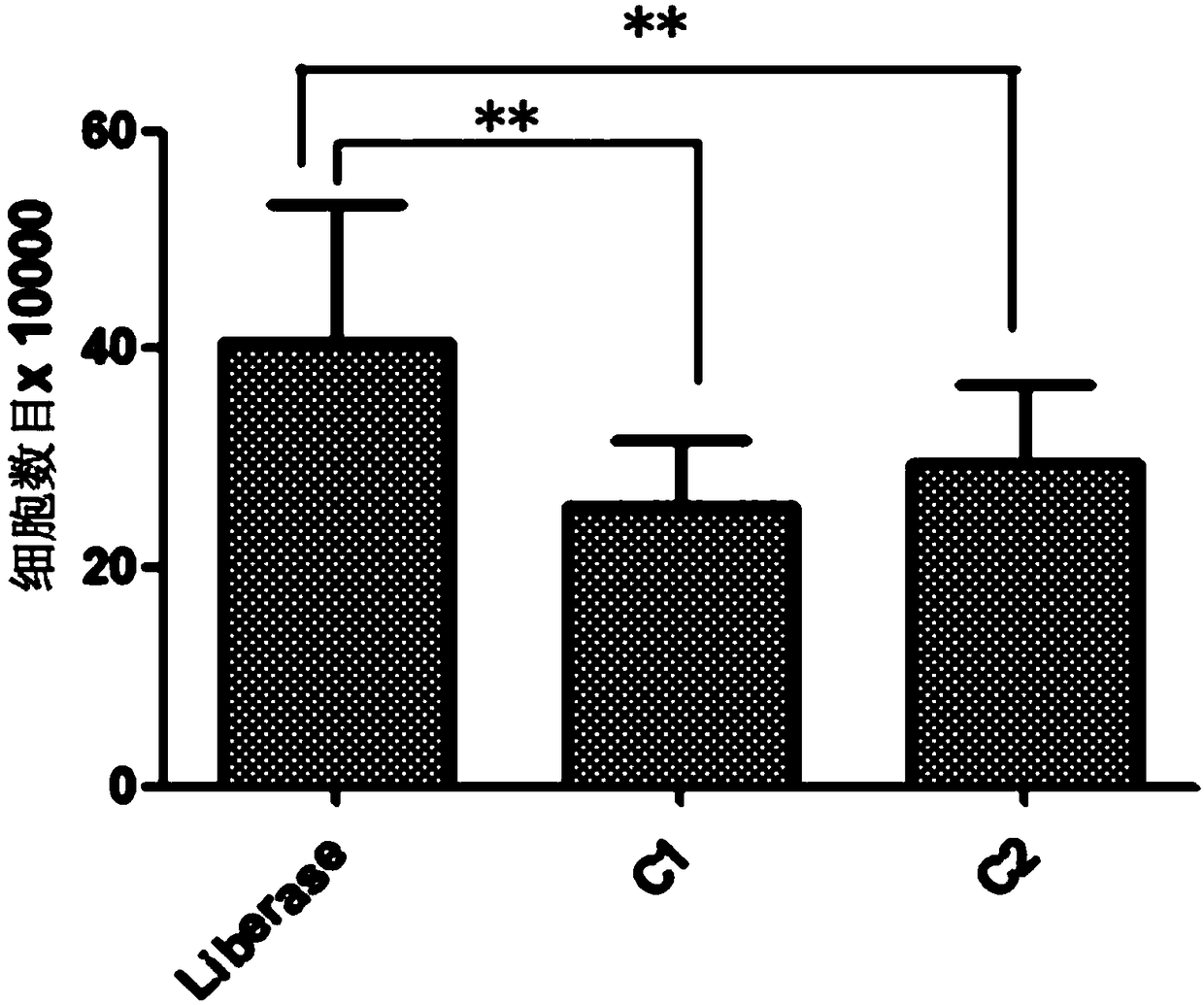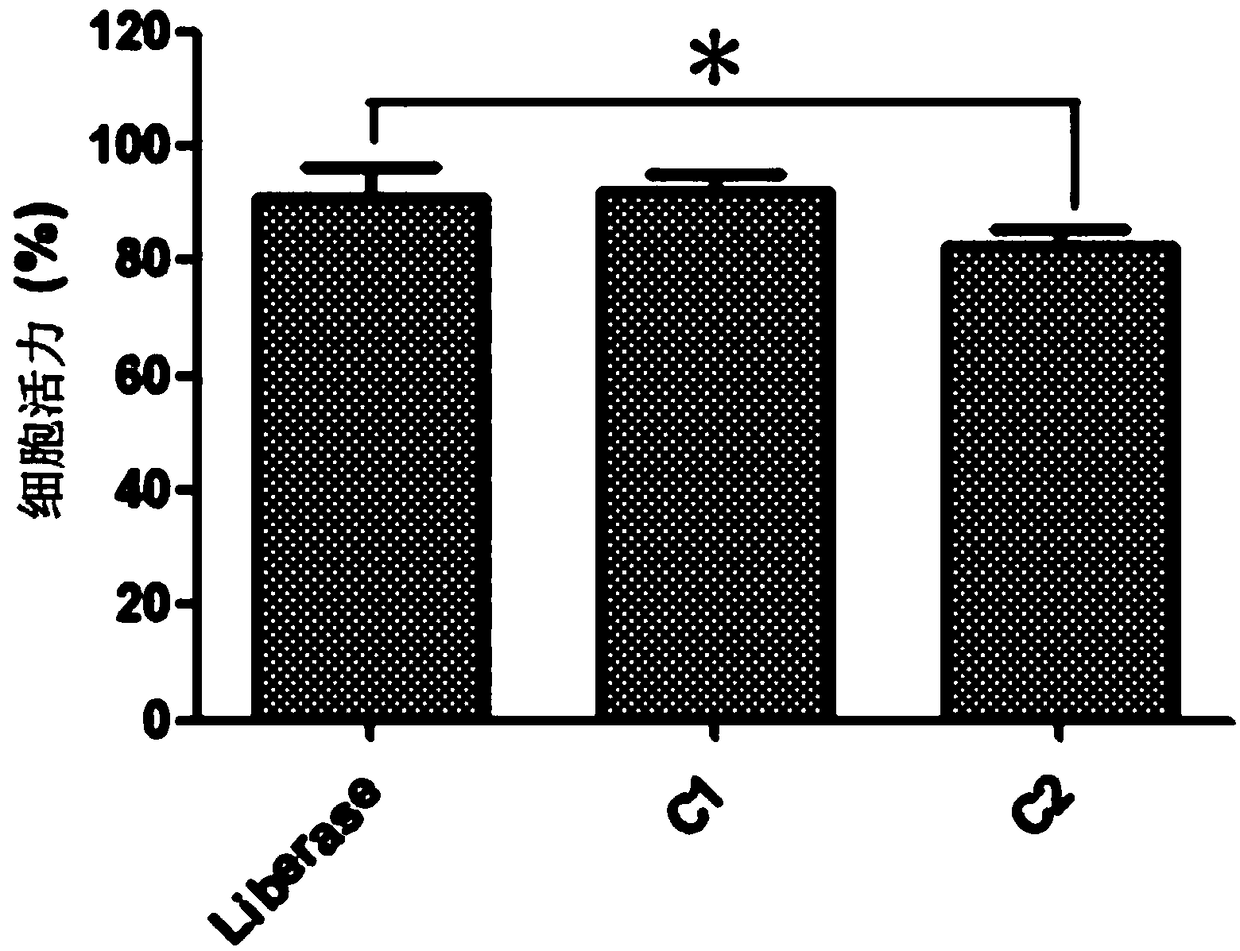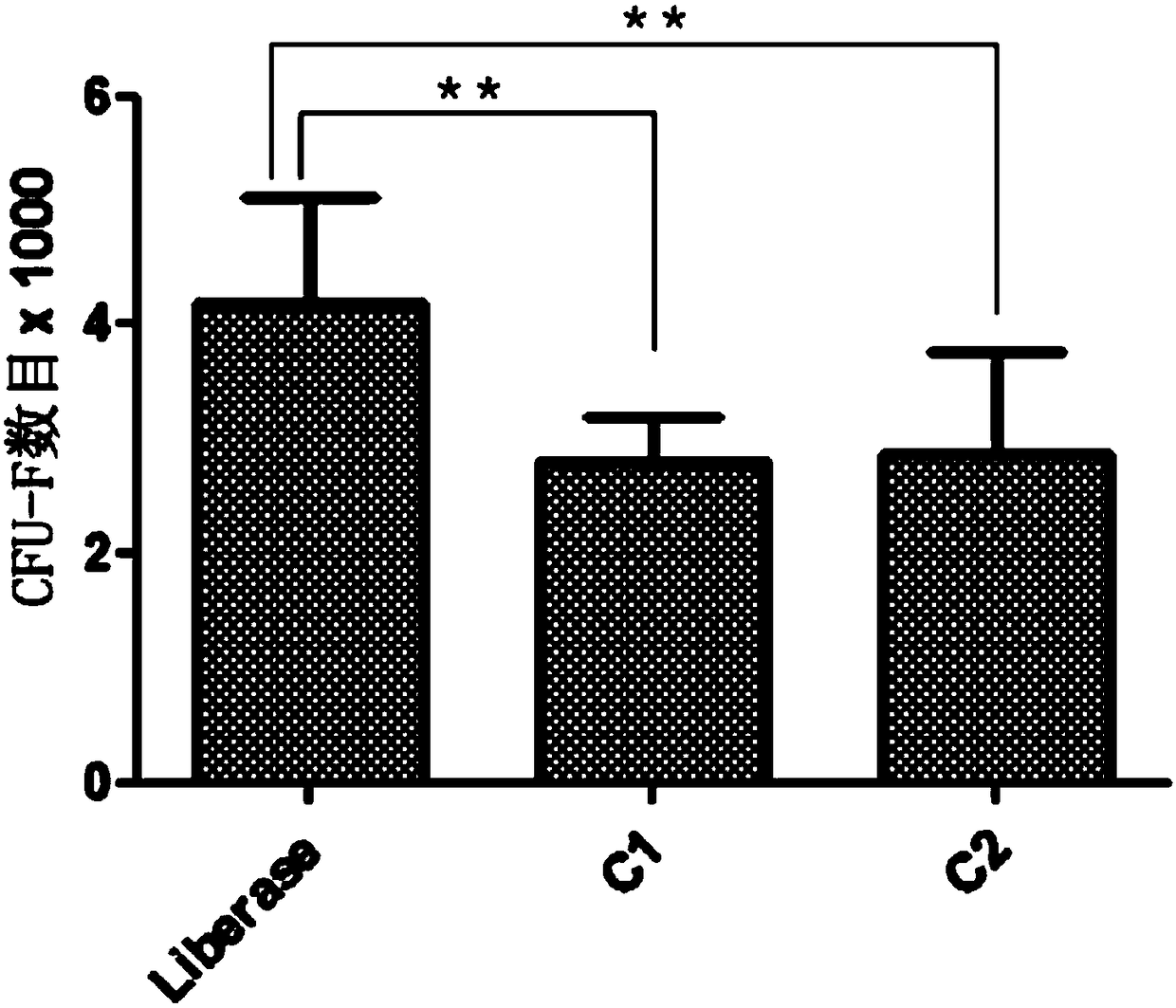Separation and cultivation method of human adipose stem cells
A technology of human adipose stem cells and a culture method, which is applied in the field of separation and culture of human adipose stem cells to achieve high purity, good therapeutic effect, and time-saving effects
- Summary
- Abstract
- Description
- Claims
- Application Information
AI Technical Summary
Problems solved by technology
Method used
Image
Examples
Embodiment 1
[0054] 1. Preparation of digestive enzyme solution:
[0055] Use serum-free medium (DMEM-F12) to prepare a solution containing 0.01-0.4WU / mL Liberase digestive enzyme, and sterilize it with a filter membrane with a pore size of 0.2 μM.
[0056] 2. Coated cell culture flasks:
[0057] When using the serum-free medium provided by the invention, each culture bottle should be coated in advance. The digested human adipose stem cells were cultured with 1-10 μg / mL recombinant human fibronectin and 1-10 μg / mL hyaluronic acid-coated culture flasks for the first time, and only 1-10 μg / mL recombinant human fibronectin was used later. Culture flasks coated with human fibronectin. Add 5 ml of coating solution diluted with normal saline to a T75 culture flask and aspirate the coating solution before adding the cells.
[0058] 3. Isolation and culture of human adipose stem cells:
[0059] Add the lipoaspirate to a 250ml centrifuge tube, then add an equal volume of normal saline; shake th...
PUM
 Login to View More
Login to View More Abstract
Description
Claims
Application Information
 Login to View More
Login to View More - R&D
- Intellectual Property
- Life Sciences
- Materials
- Tech Scout
- Unparalleled Data Quality
- Higher Quality Content
- 60% Fewer Hallucinations
Browse by: Latest US Patents, China's latest patents, Technical Efficacy Thesaurus, Application Domain, Technology Topic, Popular Technical Reports.
© 2025 PatSnap. All rights reserved.Legal|Privacy policy|Modern Slavery Act Transparency Statement|Sitemap|About US| Contact US: help@patsnap.com



